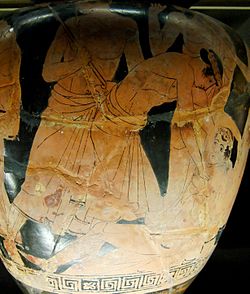
Hermonax was a Greek vase painter working in the red-figure style. He painted between c. 470 and 440 BC in Athens. Ten vases signed with the phrase "Hermonax has painted it" survive, [1] mainly stamnoi and lekythoi. He is generally a painter of large pots, though some cups survive.

